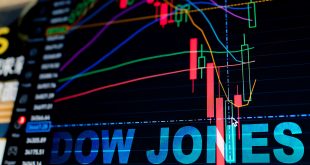Rising Trade Disputes Drive Gold Prices: Gold prices have been climbing steadily since the start of Tuesday’s trading session, fueled by ongoing global trade tensions. Recent actions and statements from U.S. President Donald Trump have intensified market uncertainty, pushing investors toward safe-haven assets like gold. The precious metal rose to $3,316 per ounce, up from the previous day’s close of $3,312, with intraday trading fluctuating between a low of $3,310 and a high of $3,330.
U.S. Trade Policies Stir Market Volatility
The latest wave of trade disputes stems from U.S. announcements targeting several countries with new or increased tariffs. For instance, Brazil faces the possibility of tariffs rising from 10% to 50% on its exports to the U.S. unless a trade agreement is reached by August 1, 2025. Similarly, new tariffs have been imposed on Algeria, Libya, and Iraq, countries previously unaffected by such measures. These actions have heightened market concerns, as they signal a broader push to reshape global trade dynamics.
Threats to BRICS Nations and Copper Imports
In addition to country-specific tariffs, the U.S. has introduced a 10% tariff on nations attempting to join the BRICS economic bloc, a move that could discourage participation in the group. Furthermore, a new tariff on copper imports, set to take effect on August 1, 2025, adds another layer of complexity to global markets. These policies have sparked fears of retaliatory measures, potentially disrupting supply chains and increasing costs for consumers and businesses alike.
Why Gold Remains a Safe Haven
Gold tends to thrive in times of economic and geopolitical uncertainty, as investors seek stability amid volatile markets. The recent tariff threats and trade disruptions have amplified this trend, driving demand for the precious metal. While gold’s price gains reflect investor caution, they also highlight the broader economic implications of escalating trade barriers. Higher tariffs could lead to increased inflation and slower global growth, further bolstering gold’s appeal.
Economic Impact
The ongoing trade disputes present challenges for policymakers worldwide. Tariff increases may protect domestic industries but risk triggering retaliatory measures, which could harm exporters and consumers. For instance, higher copper tariffs could raise production costs in industries like construction and electronics. Policymakers may need to balance short-term trade objectives with long-term economic stability, exploring diplomatic solutions to ease tensions.
A Balanced Outlook
While gold’s price surge reflects market unease, it also offers opportunities for investors seeking stability. However, the broader implications of trade disputes warrant careful consideration. If tensions persist, inflationary pressures and supply chain disruptions could intensify, affecting global economies. Conversely, successful trade negotiations could restore market confidence, potentially easing the demand for safe-haven assets like gold. For now, gold remains a barometer of uncertainty, with its trajectory tied to the evolving trade landscape.

 Noor Trends News, Technical Analysis, Educational Tools and Recommendations
Noor Trends News, Technical Analysis, Educational Tools and Recommendations




